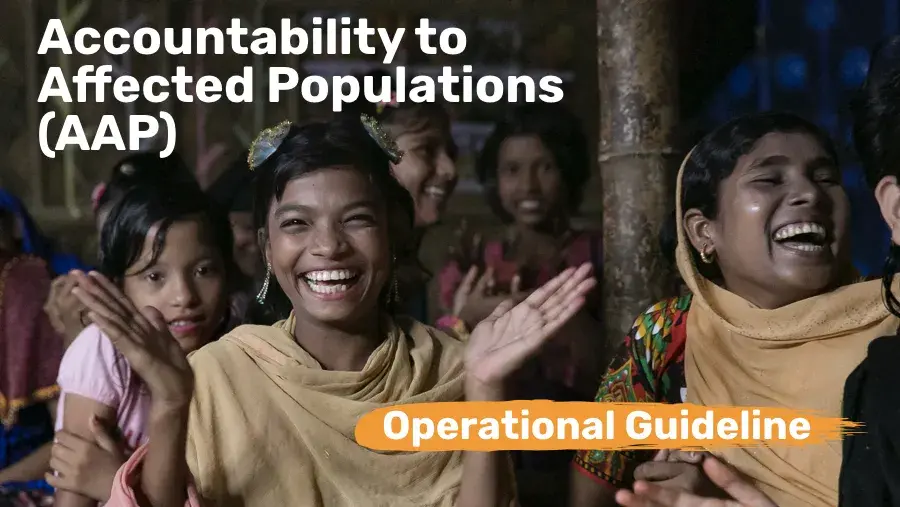AAP refers to the ‘commitments and mechanisms that humanitarian agencies have put in place to ensure that communities are meaningfully and continuously involved in decisions that directly impact their lives’. This was first launched by the Inter-Agency Standing Committee in 2012 as the result of the 2011 Transformative Agenda of making humanitarian programming at the field level more accountable to affected people.
Humanitarian actors have a duty to make sure that assistance generates the best possible outcomes for all groups who are affected by a crisis, including those who may be less visible. AAP focuses on the rights, dignity, and protection of an affected community in its entirety. AAP is about meaningful engagement, working with communities, and to actively seek and put forward the voices from the most vulnerable. It requires humanitarian actors to identify and address the needs and vulnerabilities of members of affected communities, and it equally requires them to recognise and harness the capacities, knowledge, and aspirations of those communities. Community members must be engaged and empowered throughout all stages of the humanitarian programme cycle not only to be a part of decision making, but to be equal partners helping to drive the process. Humanitarian actors are aiming to achieve this by taking account, giving account, and being held to account.
The Guideline is available as a 10mb pdf or a compressed 4mb version.




